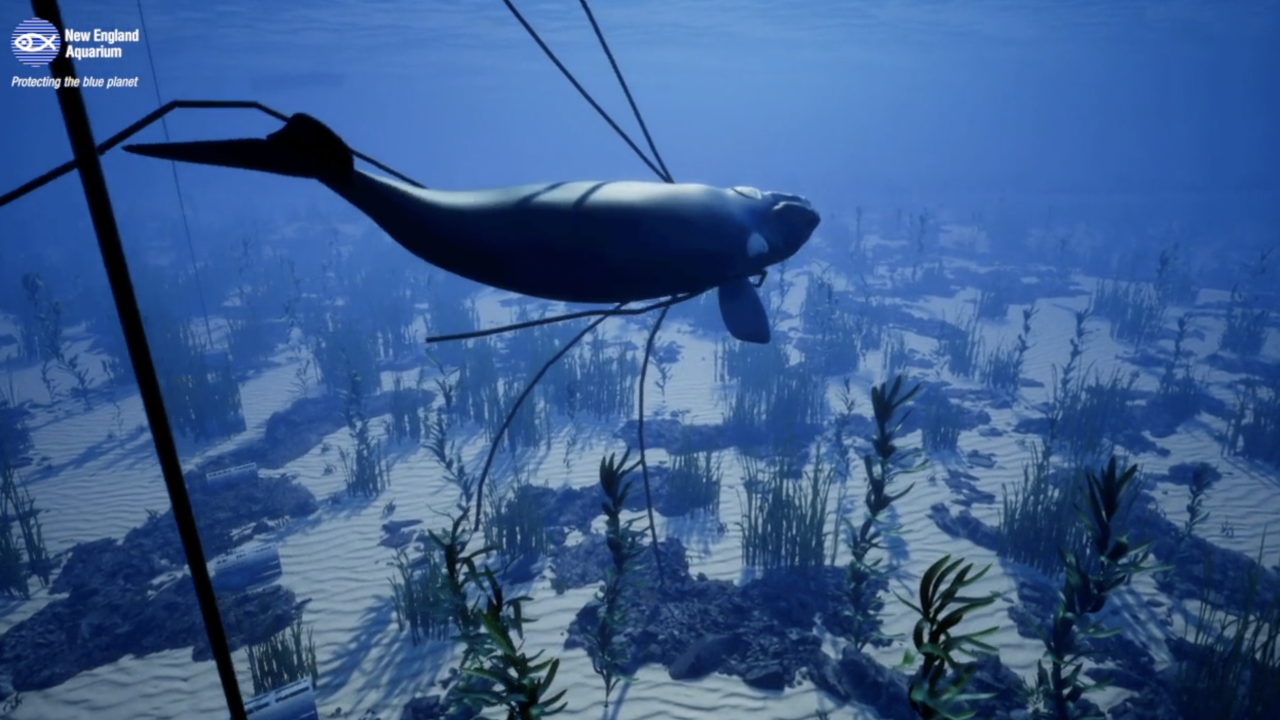The skyline of Boston is still in view when Colin Greeley catches his first glimpse of water rising off the horizon of the Atlantic Ocean. A family of whales is about to breach the surface to take a breath before diving back into the sea.
Greeley is leading a whale-watching expedition for City Cruises into Stellwagen Bank National Marine Sanctuary, a feeding ground famous for its sightings of whales and dolphins from up and down the East Coast.
On this day, Greeley was hoping to spot the elusive and endangered North Atlantic right whale.
"We get to see thousands of people every summer, so we have a chance to educate people about why it’s important to protect as many species as possible," Greeley said.
There are an estimated 366 North Atlantic right whales left on the entire planet. Climate change is making it harder for them to find food. But many experts believe this endangered species' biggest enemy is fishing gear.
Philip Hamilton is a senior scientist at the New England Aquarium and has spent decades studying the right whale. According to data compiled by the aquarium, nearly 80 percent of right whales deaths are caused by entanglement.
Hamilton often has a hard time looking through some of the pictures he's taken over the years of right whales who are struggling to survive after becoming caught in fishing lines.
"Sometimes I look at my screen and I say, 'I'm sorry.' It's hard to see," Hamilton said.
With tens of millions of fishing lines sitting in waterways throughout the Atlantic Ocean, it's easy for right whales to become caught. Once they do become entangled, this 100-ton mammal uses the entire force of its body to try and break free. That force often causes deep and sometimes fatal gashes in the whale's body.
"Since 2017, there have been 49 right whales killed or seriously injured," Hamilton noted.
But deep below the surface of the ocean, there are efforts underway to keep those right whales from becoming entangled.
Rob Morris is with a company called EdgeTech. They have developed a new type of lobster trap that doesn't rely on a fishing line permanently sitting in the water. Instead, they've developed a trap that has a rope kept inside of it.
When a fisherman is ready to retrieve that lobster trap, an iPhone application tells it to deploy a buoy to the surface.
"It’s becoming more popular, people are seeing it can work and it does work," Morris said.
If these traps could reduce those numbers even by just a fraction, it could mean one less entanglement. For lobster fishermen though, overhauling their fishing gear is not a simple or cheap task.
Michael Lane has been fishing the waters off Cohasset, Massachusetts since he was a kid. Lane is part of a pilot program working to test out the so-called "ropeless" lobster traps. But the traps are likely still years away from receiving federal approval.
"We don’t want to see them go extinct, so it's either stay home and cry about it or figure out a solution," Lane said.
This lifelong fisherman though barely makes enough money to pay the bills. Mandating these traps be used all over the country will likely take federal grants. Each apparatus costs around $3,700, compared to the few hundred dollars a typical lobster trap costs.
Money most fishermen just don't have.
"How do you invest in a business when you don’t know if you can fish from year to year? It’s hard and harder to make those capital investments," Lane said.
But the investment is better than the alternative. Officials from Massachusetts to Maine often close fishing grounds when right whales are spotted. No fishing means no income for people like Michael Lane.
"What am I going to do if they shut this down? Where am I gonna go? I have a high school diploma for Christ's sake," Lane said.
Saving these whales is a complex, difficult task. But once they're gone, that's it for the North Atlantic right whale.




